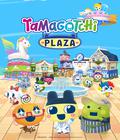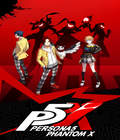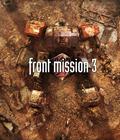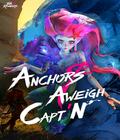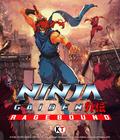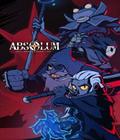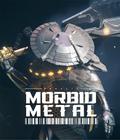
Genre: Compilation
Publisher: Empire Interactive Europe Ltd.
Developer: Taito
Release Date: May 16, 2007
 Quick, name a popular console title from Taito!
Quick, name a popular console title from Taito!
Don't worry if you can't; most people are unable to name a console-based hit produced by this storied Japanese game developer. Taito has been producing video games since 1973, but its presence on the console gaming market has been nearly nonexistent for the entire time. Taito's true focus has always been on arcade machines (Arcades, the place where you put quarters into machines and play a video game. Trust me, they used to exist.), and this is demonstrated in every title included in the Taito Legends 2 compilation.
Taito Legends 2 includes a total of 39 games (no, that's not a typo), ranging from 1979 to 1997 — that's 18 years' worth of video games crammed onto one disc. Interested gaming fanatics can actually track the progress of the company's technological development over the years, with the ultra-simplistic, Atari 2600-grade graphics of titles such as Lunar Rescue and Crazy Balloon offering a stark contrast to the significantly more polished presentations of Ray Storm and G Darius. It's also interesting to watch the focus of their themes change over the years, if you're intrigued at all by the growth and maturing of a video game company. From the let's-try-a-bit-of-everything approach of the early- to mid-'80s, to the platforming and action emphasis of the mid- to late-'80s, to the deep forays into Final Fight clones and side-scrolling shooters in the 1990s, this compilation definitely does a lot to demonstrate that Taito has altered its focus multiple times in order to keep up with the changing climate.
Taito Legends 2 excels in almost every facet of its production; these may be old games, but playing them is largely painless and feels exceptionally authentic. Simply press the X button at the title screen, and you're taken to a chronological list of the available games; there are no bizarre and fancy menus, no unneeded loading times. The game simply says, "Here's the menu, Mac. What're you having?" Still, if you're not too keen on the default method, the game does offer the option to change its sorting method from chronological to alphabetical; it's all about how you roll. Choosing a game is as simple as scrolling up and down to the title you want and pressing X, which brings you to what I call a standby screen. This screen displays the controls for each game (and allows you to change them, which is a very useful feature on some titles), and even includes the option to choose game difficulty and number of lives. A box to the right includes a brief explanation of the game's basic functions, but choosing Additional Info will offer useful hints and valuable insights on how to succeed in your title of choice.
Each game requires "credits" to play...yes, the translation really is that authentic. Just press Select to plop a "quarter" into the "machine" and press L1 to begin, and you're off and running. Just like the arcades, credits can be added on the fly, even during gameplay; a quick tap of the Select button, and you've got yet another credit waiting for you if you should happen to die. (Keep in mind that these games were meant to consume quarters as much as time, so you will die, and often.)
It is in this fundamental aspect of Taito Legends 2 that its fatal flaw, the one thing that keeps it from being great, becomes apparent. While many of the older titles are challenging enough that no amount of credits will help you, it's not long until you realize that these games were designed as quarter-munchers for a very good reason: In one sit-down, I beat Dungeon Magic, Elevator Action II and Growl. These are not games that will stand the test of time very well; unless you set artificial goals for yourself, you'll find that their replay value sharply diminishes, with no reason to continue play except to achieve a slightly better high score.
Another interesting note about Taito Legends 2is that, unless you've been aggressively importing Japanese video games for the last 20 years, most of these titles will be unknown to you. Sure, lots of people know about Elevator Action and Space Invaders (which got not one, but two makeovers in this collection), but how many people have played Cleopatra Fortune, Don Doko Don or Liquid Kids? A truism in the gaming industry is that as much as we may bemoan many Japanese titles never reaching American shores, there is a very good reason for that: Many titles simply aren't good enough to make the cut. For every Bonze Adventure, Camel Try and Gekirindan — three titles I strongly recommend trying if you purchase this collection — there are a hundred Front Lines, Ki Ki Kai Kais, Syvalions and Wild Westerns to remind us that not everything the Land of the Rising Sun creates is made of gold and win.
It is with great regret that I must remind you that this is the second Taito Legends ... and to inform you that, regretfully, Taito didn't exactly hold out on us with the release of the first compilation. Remember games like Bubble Bobble, New Zealand Story, Operation Wolf, Rastan and Super Qix? Yeah, me too. Those were great and make me wish that I had thought to purchase the first title in this series, the one that actually includes the aforementioned titles. Taito Legends 2 includes enough quality material that I don't wish that I had the first instead of the second, but it's missing enough hits that I definitely feel that I'm missing out by not owning both. If I had to choose one, the original would definitely have enough solid nostalgia to beat out the sequel. Additionally, there is some variance on the selection based on the system for which you purchase this compilation: Xbox and PC owners get Bubble Symphony (commonly known as Bubble Bobble 2), the long-missed Cadash, Pop'n Pop and RayForce, and I would trade all of PS2's exclusive titles (Balloon Bomber, G-Darius, Raystorm and Syvalion) for either of the first two Xbox/PC exclusives.
I urge anyone reading this review to not be put off by the above paragraph; while Taito Legends 2 is not what the original was, it's also good enough to warrant a rental and possibly even a purchase. The controls are exceptionally tight, the translations from the original arcade titles are splendidly recreated in a fashion that suggests to me that great care was taken to ensure that each game would be faithful to the original and the interface is both simple and useful. Younger gamers will have a new experience with these titles and be introduced to the notion of a building where people used to put quarters into machines to play video games. Older players will get to experience a fair dose of nostalgia, and both groups will find new, entertaining experiences with games that have never before seen American shores. Only the greatest of technological snobs will dislike this offering, and they're not the target audience for this title anyway. Taito Legends 2 definitely earns its spot in my collection.
Score: 8.1/10



